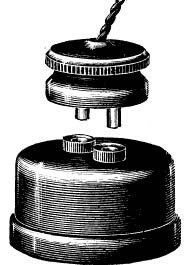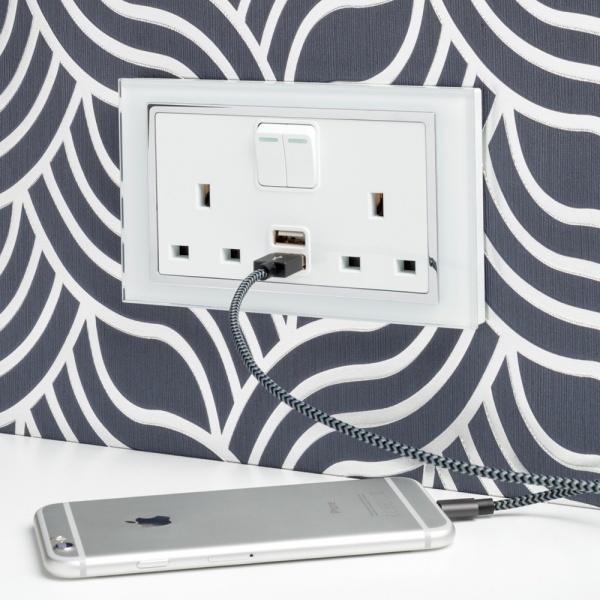The history of the plug socket14 August 2020 | Amit At Retrotouch, we believe our products are the latest stage in the evolution of plug socket technology. So we wanted to take a moment to recognise the spirit of innovation that led the creation and early development of these indispensable household gadgets.
Origins
So what are the origins of the humble plug socket? If you’re imagining some wizened Victorian entrepreneur beavering away amid piles of electrical gizmos, then you’re absolutely right. Thomas Tayler Smith, a British inventor, was the first to patent a rudimentary version of the plug socket back in 1882. His effort, featuring two pins connecting to some rounded metal sockets, laid the groundwork for the growth and development of plug sockets around the world.
The image below, taken from a General Electric Company catalogue, shows what an early version of the plug socket would have looked like. It’s a far cry from the crystal sockets we produce today but aesthetics and design flourishes came second fiddle to our patent-obsessive ancestors.
Across the pond, Brooklyn born Harvey Hubbell was busy perfecting his own version of the plug socket, with many of his innovations still being used today. Hubbell's first plug design differed from those already in use in Europe, with ‘annular detents’ (a clever sounding term for ‘grooves’) ensuring plugs don’t slide out of the socket, and the use of three way adapters.
Three pins are better than two
The next milestone in the development of sockets was the inclusion of a third pin, introduced in the 1920’s, which acted as a safety measure in case of short circuits. The third pin on the outlet was an earth pin, which was effectively connected to earth, this being at the same potential as the neutral supply line. The idea behind it is that in the event of a short circuit to earth, a fuse will blow, thus disconnecting the supply.
In the UK, this third pin is longer than the other two so it can operate shutters on the other two holes in the socket, making it impossible to get electrocuted by jamming cutlery or other metal objects into it (not a recommended pastime).
Regulation
By the end of WWII, the British government needed to build a lot of new houses as many were destroyed during the war. The government also anticipated a worldwide copper shortage due the huge amounts of wartime demand for the material. They therefore decided to make one standard electrical system and plug design throughout the country, with this design also reflecting their concern about copper shortages.
One of the main design aspects of this move towards standardisation was improved electrical system regulations so power circuits became ‘ring mains’ instead of circuits that have their own fuse for each outlet. This system design significantly decreased the amount of copper wiring needed when building all these new houses, and is a hallmark of our plug sockets today.
Shinier, smarter, and more efficient
Modern plug sockets present a great leap forward from those of yesteryear, not only in their superior build quality, but in the attention given how they blend in with a building’s decor. Today’s home builders no longer make do with squeaky plastic offerings, or industrial looking sockets that look better placed in factories or warehouses. Retrotouch are leading the charge, offering some stylish and simplistic designs that provide use value and aesthetic pleasure in equal measure. View our full range at https://www.retrotouch.co.uk/plug-sockets.html STAY CONNECTEDDon't miss out, sign up and keep up to date with new product launches, offers, competitions and articles |




or join the conversation... View